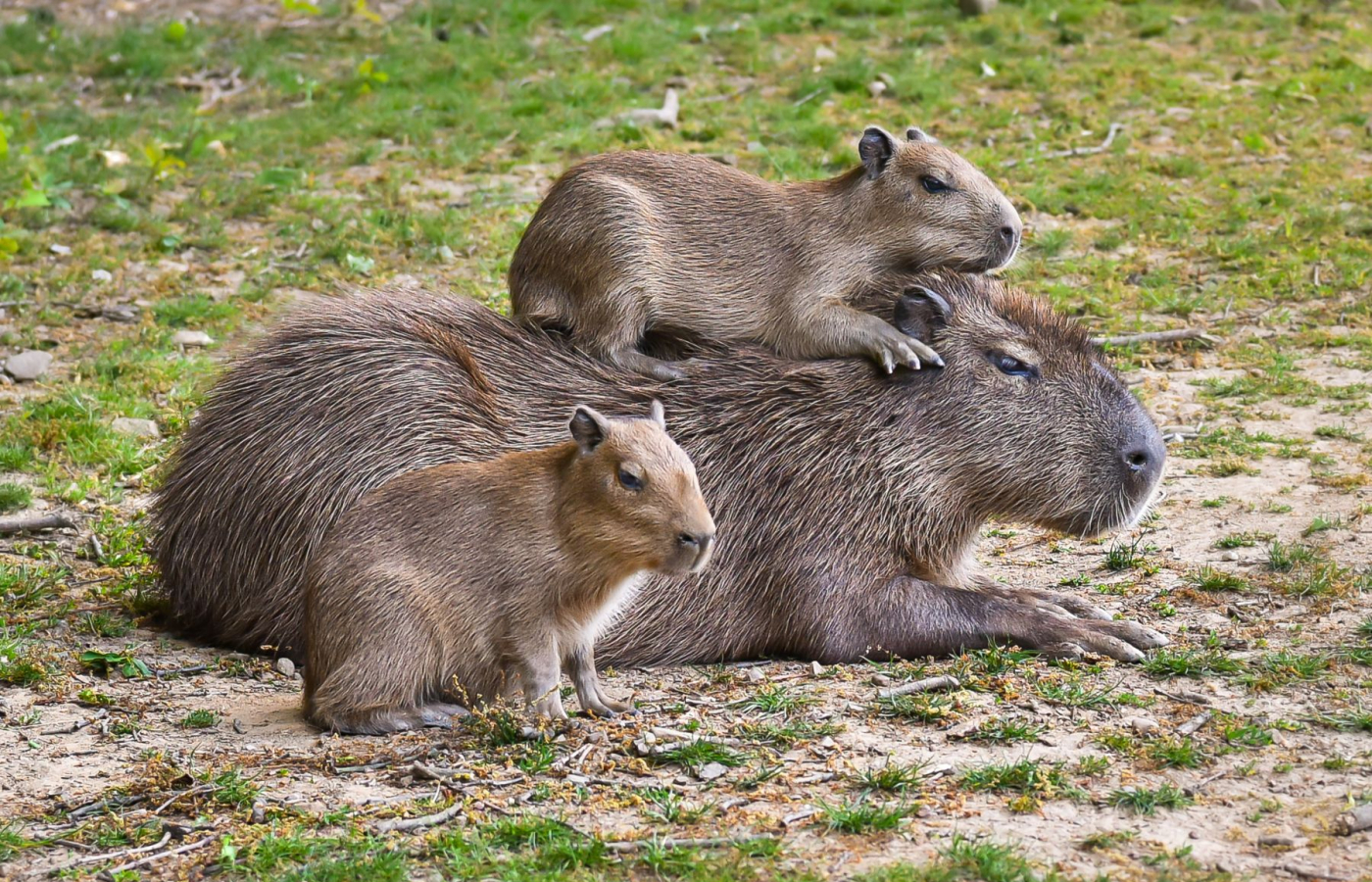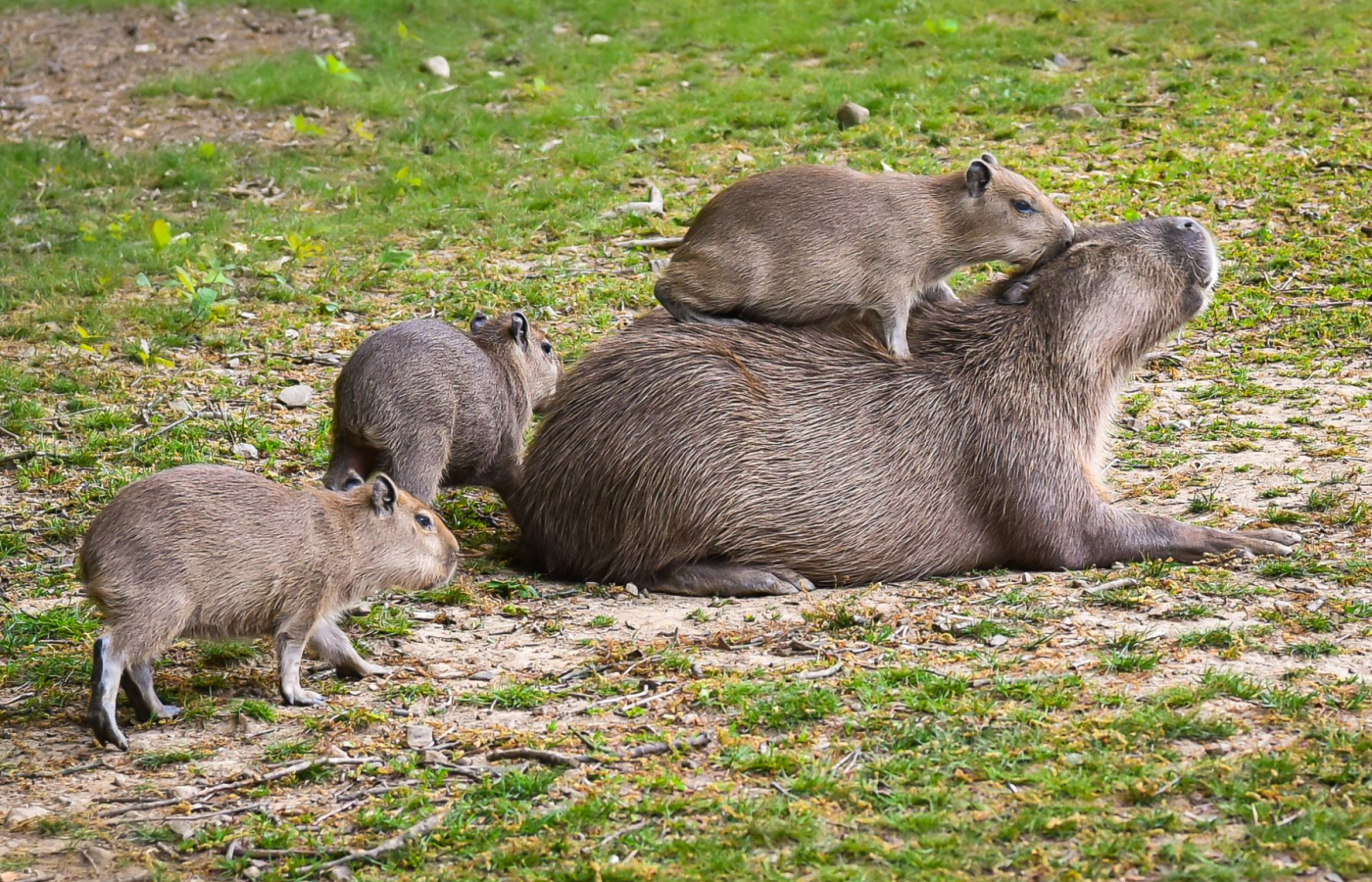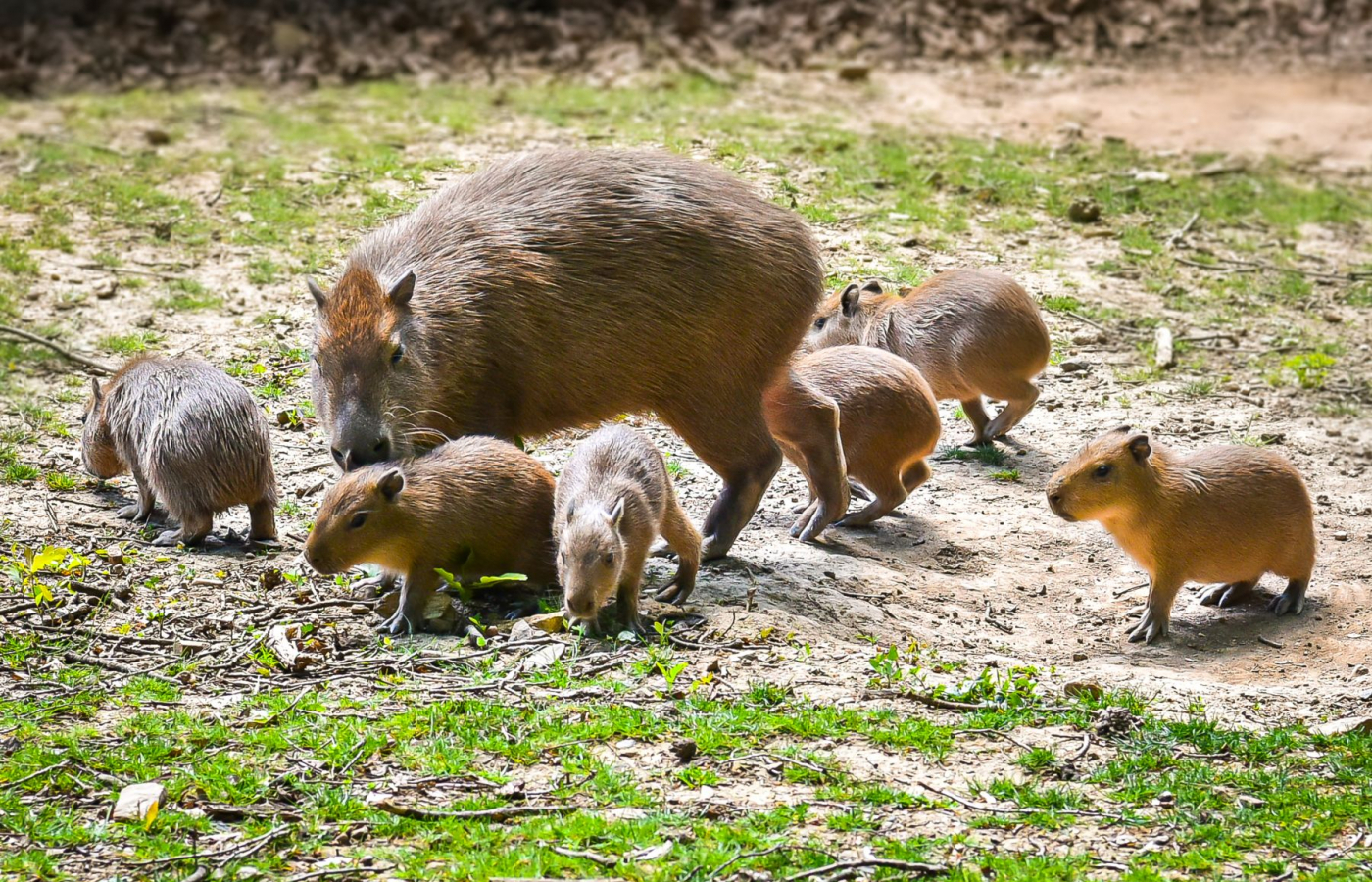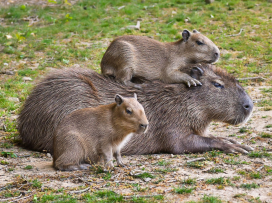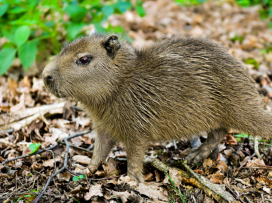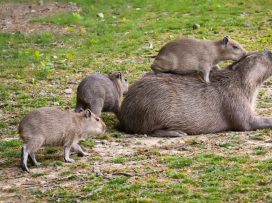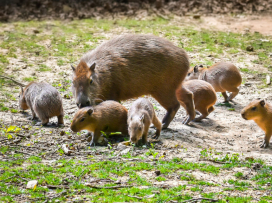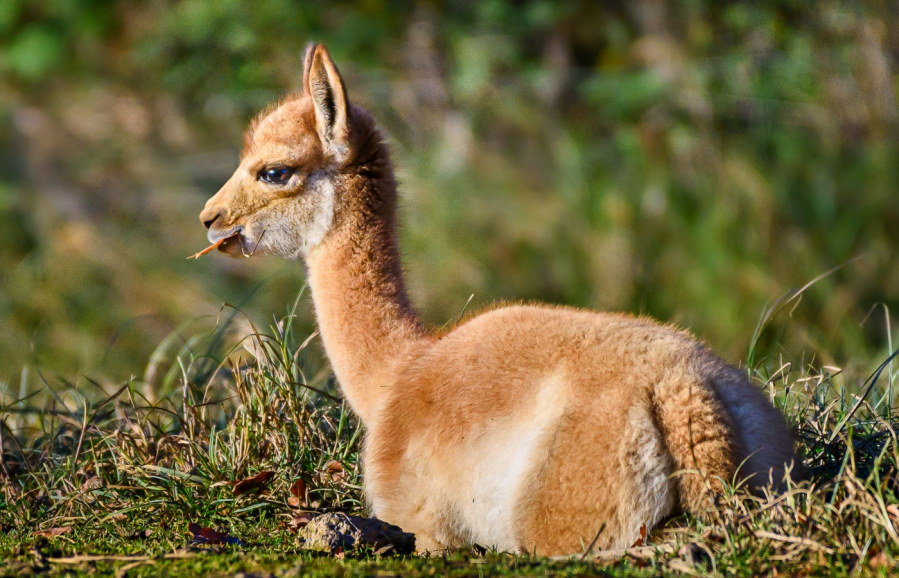Love Story: The capybara couple to welcome sextuplets!
Our herd of capybaras, the largest rodents in the world, enlarged by six pups at the beginning of April. This is the largest litter in the history of the Zlín Zoo.
All the pups are thriving after spending the first month of their lives in the safety and tranquility of their breeding facility. Now, all of them joined the other members of the herd in their large paddock in the South American area of the zoo.
"The pups are vivacious and their mother takes an excellent care of them. Our Zoo has been raising capybaras for 35 years and we have successfully raised eighty cubs thus far," said Romana Mikešová, head of marketing. Mating of capybaras takes place in water and the female gives birth to two to eight cubs after 150 days of gestation. At their birth the pups weight about 1 500 grams. "Immediately after birth, the capybara babies are perfectly developed, and thanks to their precociality they can immediately run, swim and dive and since the very next day, they are able to accept solid food. Yet, their mothers tend to nurse them for about 4 months," explained Ivana Jakšičová, a breeder in the South American area. In addition to the breeding pair and the new pups, visitors can also see 3 adult pups from previous years. In June, the large cappy group is going to move to the natural lake and its surroundings in their summer exposition in the Amazon district.
This giant cavy rodent is native to South America and can be found from Panama down to northern Argentina. They are the largest living rodents, females are even larger than males. Their body length is around 130 cm and in adulthood they weigh around 70 to 80 kg. They live alongside rivers, lakes and swampy areas, seeking these out not only the abundant grass, but also for thermoregulatory reasons because they can overheat quickly. Capybaras are masters of diving, they can stay for up to 10 minutes underwater. The eyes, ears and nostrils are located high on the head, so the submerged capybara is almost invisible in the water. They can also even sleep submerged, keeping their nose just above the surface. These rodents have a short web between their toes that helps them swim. They live mostly in groups consisting of one dominant male and a harem of females. According to their diet, they feed on plants exlusively – on grass, water plants, shoots of young trees and also various fruits. In our zoo, they are used to being fed hay, carrots, oatmeal, special cappy granules, and also on their beloved beetroot and Chinese cabbage. Capybaras mature at the age of 15 months, their lifespan in the wild is 4-8 years, in human care they can live up to 12 years.
Capybaras common name comes from the Guaraní tribe and means "one who eats slender leaves". In many areas of South America, people hunt capybaras intensively for their tasty meat, quality skin and extremely soft fur. However, a number of countries are initiating their protection, e.g. in Colombia, to hunt capybaras is prohibited.
Good to know

We Have Restored the Fabric Wallpapers in Lešná Chateau
This year, we continued our efforts to preserve the rare fabric wallpapers in Lešná Chateau. The Ladies’ Salon is now adorned with a beautiful replica of the original wallpaper—and it even revealed a…
Explore new things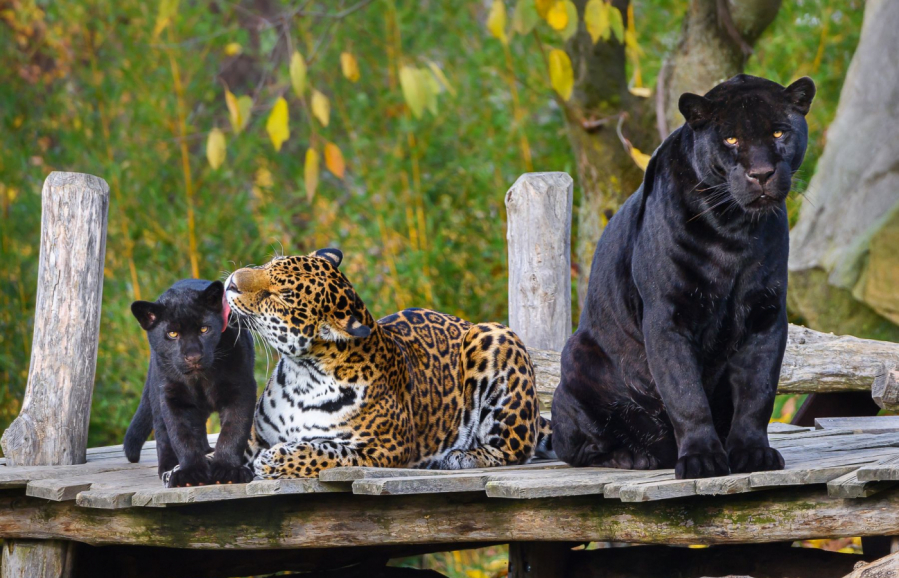
Visit Zlín Zoo
Even in the nearly winter season, Zlín Zoo has its own charm – it’s full of life and definitely worth a visit.
Explore new things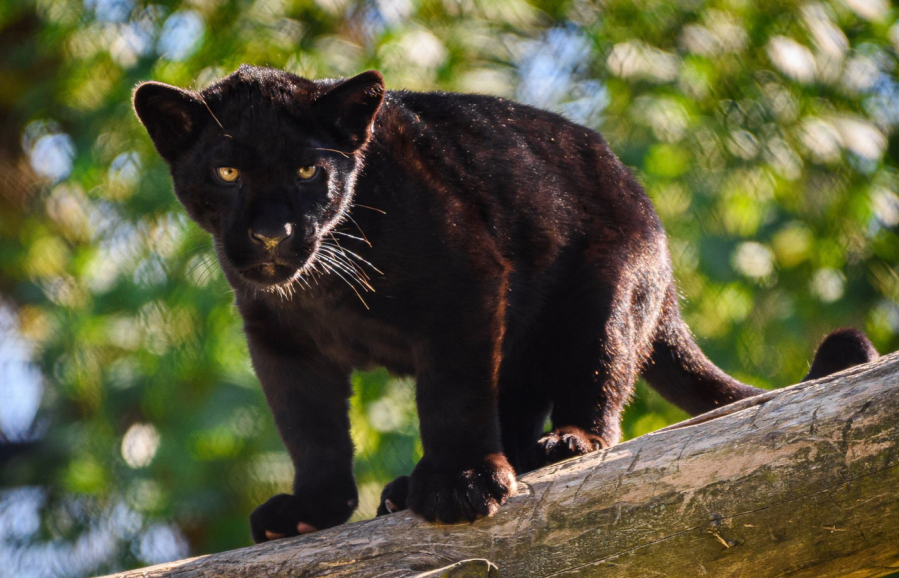
Jaguar Cub Named Mayara
On Saturday, October 4, the female jaguar cub at Zlín Zoo received her name — Mayara. The christening ceremony took place as part of the celebrations of World Animal Day and the people who care for…
Explore new things



